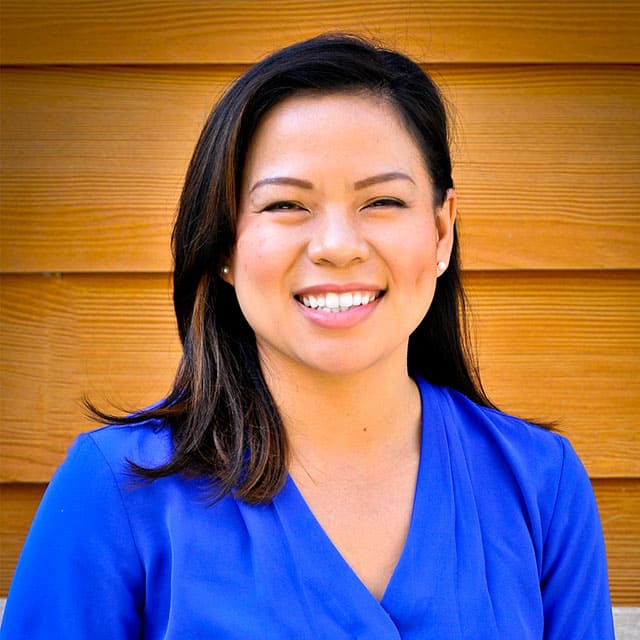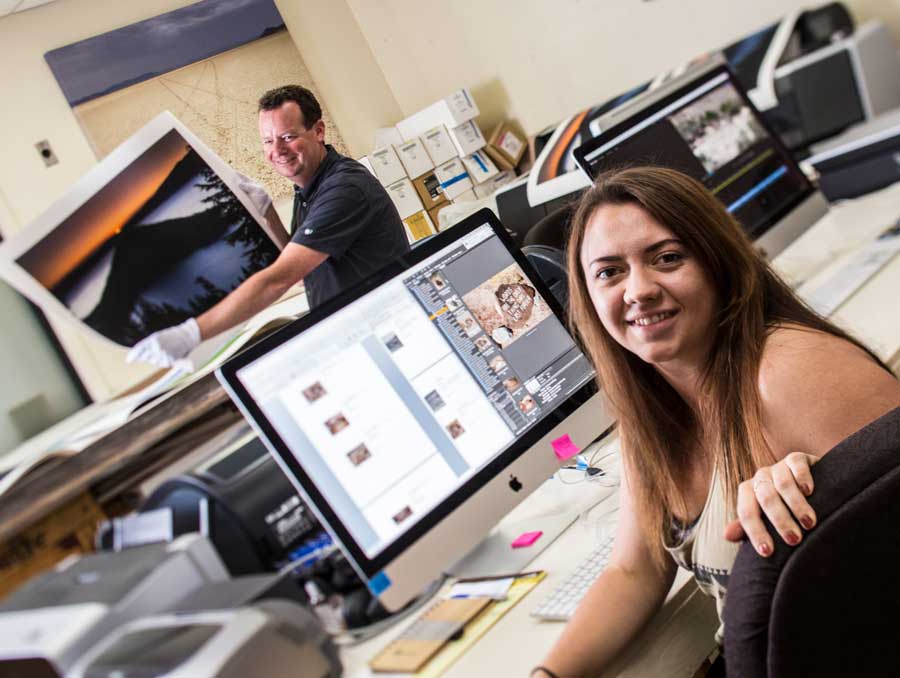Opportunity U sat down with Jodi Tenenbaum, a graphic designer at the University of Nevada, Reno, to discuss her career path, her background and tips she has for those looking to enter the graphic design industry.
Opportunity U: For those unfamiliar with the industry, what is a graphic designer?
Jodi: A graphic designer is a visual communicator and usually has a B.A. or BFA in graphic design. They are often very conceptual and can turn ideas into well-balanced designs resulting in a call to action or response.
Opportunity U: What types of companies hire graphic designers?
Jodi: Graphic designers can be found in a range of places, from newspapers to ad agencies. I work for a University, but really all kinds of businesses hire graphic designers. Designers with digital skills can find work with tech companies, and of course, freelancing is an option for many designers.
Opportunity U: What can a day in the life of a graphic designer look like?
Jodi: Every day is different. As an art director for the University of Nevada, Reno, I am expected to work on all projects and create beautiful print materials that help recruit students. Also, a big part of my job is to art direct hundreds of photo shoots and videos on location around the University & Lake Tahoe. I help with budgets, create storyboards and even stage the shoots to help tell the story of our University. Design is at the heart of everything I do.
Opportunity U: What are some important talents a graphic designer should have?
Jodi: Get to know Adobe software. Adobe Max is Adobe’s free, online conference that features all their software presented by movie stars, talented artists, designers, photographers and more. I use InDesign, Illustrator and Photoshop every day at work.
Also, study all forms of design to help you understand how fonts, illustrations and photos work together in creating infographics, posters, brochures, billboards, etc.
Another big part of my job is prepress where I check my work for printers. If files are not perfect, then the project is not successful – this is a very important. Sometimes a stressful part of being a graphic designer is that the end result is 100% your responsibility.
Opportunity U: If someone wants to be a graphic designer, what major should they go into?
Jodi: I have a B.F.A. in graphic design from the University of the Pacific in Stockton, CA. and a M.A. in journalism from the University of Nevada, Reno. In order to get the top jobs in graphic design, you should consider a B.F.A., which is more competitive and can help get your name at the top of the list when looking for a job. You may also make a higher salary with a B.F.A. in graphic design.
Also, another major to investigate is web interface design, a hot degree that can help you get higher wages. If you can create designs in CSS, which is a computer design language, it can connect you to jobs with tech companies, local businesses and ad agencies looking for these type of talented interface designers.
Opportunity U: What types of classes would a student take as a part of the program?
Jodi: In my BFA program, I learned all the mediums of fine art & graphic design. Some of the classes I took were figure drawing, color and design, instrumental drawing, 3-D sculpture, photography, art history, watercolor painting, silk screening, and lithography/print making.
Part of the graphic design curriculum was creating a logo design and all the branding for a fictitious company. I designed a logo for an aquarium store I named ‘Finaroma.’ I learned every step that it takes to design a cohesive and visually beautiful project that I then presented to professors and classmates during my senior year.
Also, I was required to do an internship where I was the art director for our university radio station – KUOP. I designed all the marketing materials such as postcards, posters, billboards and swag, and helped with fund raising events.
Opportunity U: Outside of the major classes, are there other courses a student should think about taking? Why?
Jodi: All four-year colleges require you take general education classes where you can mix and match electives to balance your art degree. I took several business classes that helped me understand the business world including supply and demand, marketing, microeconomics, and accounting. But it’s totally up to you what general education classes you want. I feel these classes help students become a well-rounded knowledgeable person.
Opportunity U: Outside of college classes, how can a student prepare or build their resume?
Jodi: I study other designers’ resumes that come into my office, but if you are just starting out you can look on LinkedIn to see what other designers create. I feel that a graphic designer needs to make their resumes super sharp and visually appealing.
Opportunity U: Where do you see the graphic design field heading ?
Jodi: Very much in demand. Print is still a viable medium and a good graphic designer is well paid. The field will continue to be strong because all businesses need to visually communicate to clients and make sure customers engage with their products and brand. I also have dozens of freelance jobs throughout the year and work with clients on the weekends to make extra money. There will always be work for graphic designers!
Opportunity U: What is your advice to students interested in a career in graphic design?
Jodi: Work hard, stay humble and be willing to work on any project whether it’s a business card, flyer,or high-end brochure. Put 100% into all your work and always be open to other co-workers or client’s input. You can ALWAYS improve your work.
 Jeanette Chan-Rivera, M.S. is the Manager of Recruitment and Marketing at the University of Nevada, Reno. Over the last 15years, Jeanette has worked with hundreds of families navigating the admissions, financial aid and college readiness process. Her work also includes marketing and communication on behalf of the University’s Office for Prospective Students.
Jeanette Chan-Rivera, M.S. is the Manager of Recruitment and Marketing at the University of Nevada, Reno. Over the last 15years, Jeanette has worked with hundreds of families navigating the admissions, financial aid and college readiness process. Her work also includes marketing and communication on behalf of the University’s Office for Prospective Students.
Request more info
Do you have more questions we can answer? Are you interested in receiving additional information about the University, the admissions process, applying, financial aid or more?
